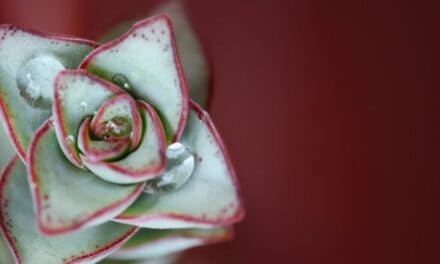It’s barely midsummer and you notice something going on with your tulip trees.
The leaves are yellowing, wilting, and dropping like it’s already autumn.
This is actually a fairly common occurrence but let’s dig a little deeper and see if your tree is behaving normally or not.
Table of Contents
Why Is My Tulip Tree Losing Leaves In Summer?
It is normal and very common for tulip trees to start losing leaves in August or even as early as the end of July.
Tulip trees are prone to dropping a few leaves throughout the year.
But they usually start losing a lot more in August, especially during very dry summers when leaf drop really accelerates.
Tulip trees are some of the first to shed leaves when fall is just around the corner and a hot and dry ending to the summer can lead to even more leaf loss than usual.
But, there are other factors worth looking into which can influence the rate at which your trees lose leaves.
Also Read: Why Is My Dragon Tree Leaning? (And How To Fix It)
Lack Of Water
If it hasn’t rained in a while and everything has really dried out, this could very well be causing your tulip tree to drop its leaves.
Tulip trees, or American Yellow Poplars, are neither tulips nor true poplars.
They’re actually part of the Magnolia family and don’t tolerate dry, arid conditions.
When conditions are too dry, tulip trees can become stressed and start losing leaves as a way to conserve moisture.
Combine this with their usual leaf drop in mid to late August and it can begin to look like it’s raining leaves.
The conditions may be too dry for your tree to support all its leaves, and that’s why it is dropping them like crazy.
Try watering your tree to relieve some of the stress it’s under.
A good rule of thumb when watering trees is to give it 5 minutes of watering time for every inch in diameter the trunk of your tulip tree is.
So if your tree has a trunk of 4 inches in diameter, it would require 20-minutes of watering.
Soil Moisture
If the environment is hot and dry, a tulip tree’s leaves will quickly yellow and fall from the branches.
Even a brief drop in soil moisture can cause the leaves to start dropping.
This is more the case for older leaves than younger ones because of their reduced ability to retain and stabilize moisture.
This makes older leaves more vulnerable because younger ones compact water within the cells.
Tulip trees should be planted in slightly acidic, deep, and well-draining soil that has been amended with lots of compost.
Avoid planting them in soil that’s too dry or too shallow.
The right soil type will definitely reduce the rate at which your tulip tree loses leaves.
Other Reasons For Leaf Loss
If the soil is moist and there hasn’t been a drought, the falling leaves could have another cause.
Pollution, increased salt in the air, fungal infections, pest infestations, or EMFs can all stress tulip trees and cause leaf drop.
Pollution And Environmental Changes
If you live in an urban area with heavy vehicle exhaust and industrialization, your tree may begin to struggle.
Even though it can handle a certain amount of environmental stress, overbearing amounts of pollution will stress your tulip tree.
Fungal Diseases And Pest Infestations
Like most other plants, long-festering fungal growths or pests will weaken a tulip tree, causing leaves to turn yellow, wilt, and fall
This can start during the winter when trees are most susceptible.
Catching problems early on will help to keep your tree healthy all year.
Fungal Diseases
Tulip trees are often at risk of damaging fungal diseases, like verticillium wilt.
This fungal disease takes hold in the roots and then spreads.
There’s no effective cure for this disease which is often fatal and once it spreads, leaves often begin to yellow and fall off.
Pest Infestations
When the leaves begin to grow in spring, the sap attracts insects like aphids and scales.
Inspect the underside of leaves for aphids indicated by tiny pink or green bodies.
Scales are about ¼” round and are a dull green to orange-pink in color with black markings.
They appear as tree growth because they look like bumps on foliage and twigs.
Both of these suck nutrients from the tree, causing leaves to distort, turn yellow, and fall.
They also secrete a substance called “honeydew” causing “sooty mold.” Although not infectious, it blocks out sunlight which can inhibit the tree’s important life functions.
Telltale signs of these pests is shiny honeydew left on leaves and sooty mold.
Neem oil and insecticidal soaps are usually effective treatments.
Seasonal Considerations
In winter, rabbits will munch on the bark, saplings are easy to succumb to frost, and often fall prey to hungry deer.
Any delicate limbs and branches are overtaken by hail, snow, and other growing vines with great ease.
Electromagnetic Frequencies
A growing problem for many plants within the last couple of decades is overexposure to electromagnetic frequency waves (EMFs).
With the fast-paced growth of new technology and the rapid rollout of cellular towers that increase EMF magnitudes, many studies prove the adverse effect this has on plants.
Other things like smartphones, tablets, computers, and other devices also emit powerful EMFs that have the potential to destroy plants.
If you see a 5G tower or transmitter in your immediate area, and you notice a change in your tulip tree, this could be the culprit.
Final Thoughts
It’s totally normal for tulip trees to start losing leaves as early as late July.
And if conditions are especially dry, you may even notice a much heavier leaf drop than usual.
Although the leaves may litter your driveway and clog your drains, It’s usually not anything to be too worried about.
Water your tulip trees and it should reduce the number of leaves they are losing.
But also check for some of the other potential problems we discussed in this article just to be on the safe side.




